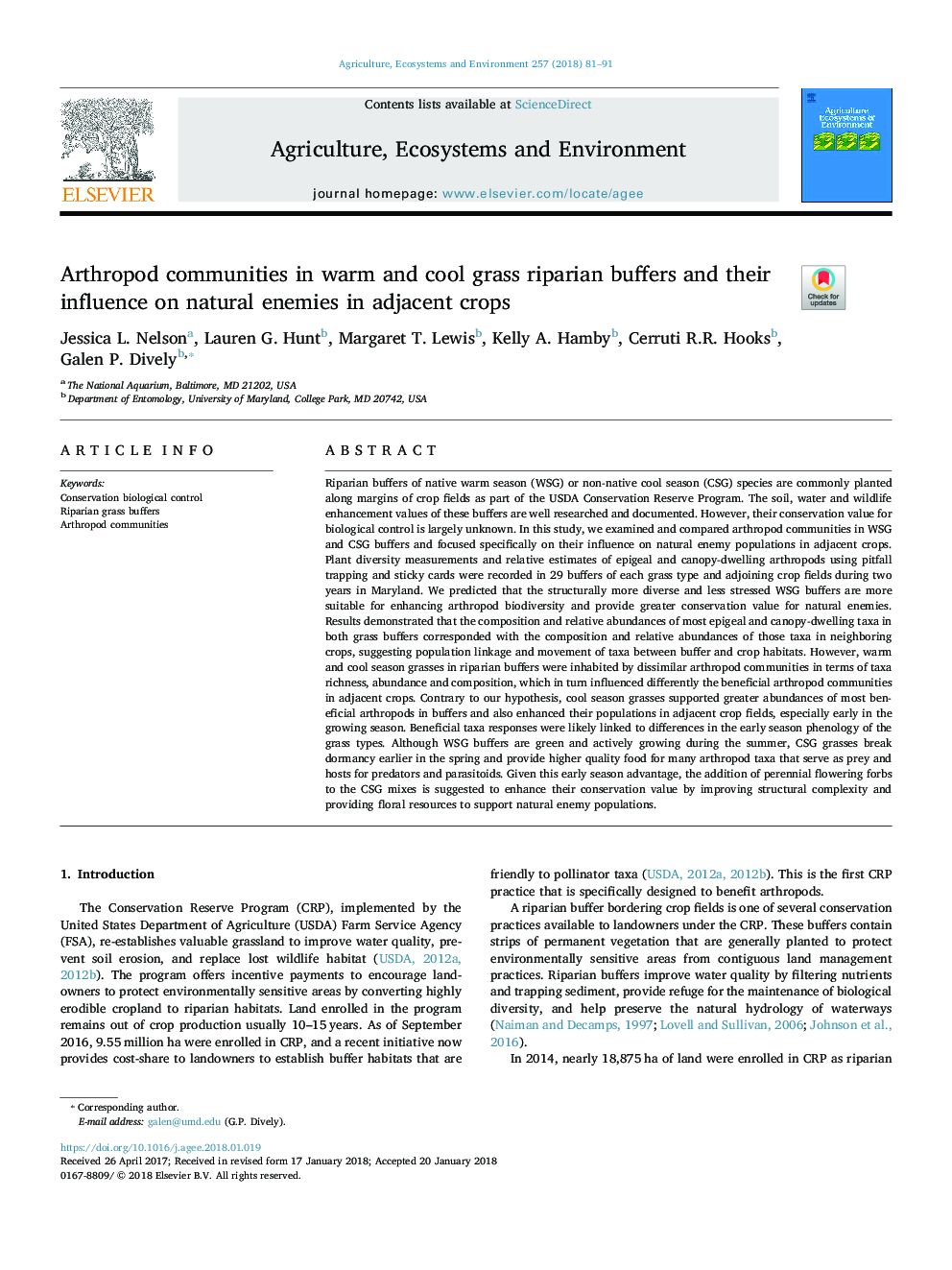| کد مقاله | کد نشریه | سال انتشار | مقاله انگلیسی | نسخه تمام متن |
|---|---|---|---|---|
| 8487140 | 1551995 | 2018 | 11 صفحه PDF | دانلود رایگان |
عنوان انگلیسی مقاله ISI
Arthropod communities in warm and cool grass riparian buffers and their influence on natural enemies in adjacent crops
ترجمه فارسی عنوان
جوامع پرتقال در بافر های چمنزار گرم و سرد و تاثیر آنها بر دشمنان طبیعی در محصولات مجاور
دانلود مقاله + سفارش ترجمه
دانلود مقاله ISI انگلیسی
رایگان برای ایرانیان
کلمات کلیدی
حفاظت از کنترل زیستی، بافر چمن مصنوعی، جوامع شهری
موضوعات مرتبط
علوم زیستی و بیوفناوری
علوم کشاورزی و بیولوژیک
علوم زراعت و اصلاح نباتات
چکیده انگلیسی
Riparian buffers of native warm season (WSG) or non-native cool season (CSG) species are commonly planted along margins of crop fields as part of the USDA Conservation Reserve Program. The soil, water and wildlife enhancement values of these buffers are well researched and documented. However, their conservation value for biological control is largely unknown. In this study, we examined and compared arthropod communities in WSG and CSG buffers and focused specifically on their influence on natural enemy populations in adjacent crops. Plant diversity measurements and relative estimates of epigeal and canopy-dwelling arthropods using pitfall trapping and sticky cards were recorded in 29 buffers of each grass type and adjoining crop fields during two years in Maryland. We predicted that the structurally more diverse and less stressed WSG buffers are more suitable for enhancing arthropod biodiversity and provide greater conservation value for natural enemies. Results demonstrated that the composition and relative abundances of most epigeal and canopy-dwelling taxa in both grass buffers corresponded with the composition and relative abundances of those taxa in neighboring crops, suggesting population linkage and movement of taxa between buffer and crop habitats. However, warm and cool season grasses in riparian buffers were inhabited by dissimilar arthropod communities in terms of taxa richness, abundance and composition, which in turn influenced differently the beneficial arthropod communities in adjacent crops. Contrary to our hypothesis, cool season grasses supported greater abundances of most beneficial arthropods in buffers and also enhanced their populations in adjacent crop fields, especially early in the growing season. Beneficial taxa responses were likely linked to differences in the early season phenology of the grass types. Although WSG buffers are green and actively growing during the summer, CSG grasses break dormancy earlier in the spring and provide higher quality food for many arthropod taxa that serve as prey and hosts for predators and parasitoids. Given this early season advantage, the addition of perennial flowering forbs to the CSG mixes is suggested to enhance their conservation value by improving structural complexity and providing floral resources to support natural enemy populations.
ناشر
Database: Elsevier - ScienceDirect (ساینس دایرکت)
Journal: Agriculture, Ecosystems & Environment - Volume 257, 1 April 2018, Pages 81-91
Journal: Agriculture, Ecosystems & Environment - Volume 257, 1 April 2018, Pages 81-91
نویسندگان
Jessica L. Nelson, Lauren G. Hunt, Margaret T. Lewis, Kelly A. Hamby, Cerruti R.R. Hooks, Galen P. Dively,
